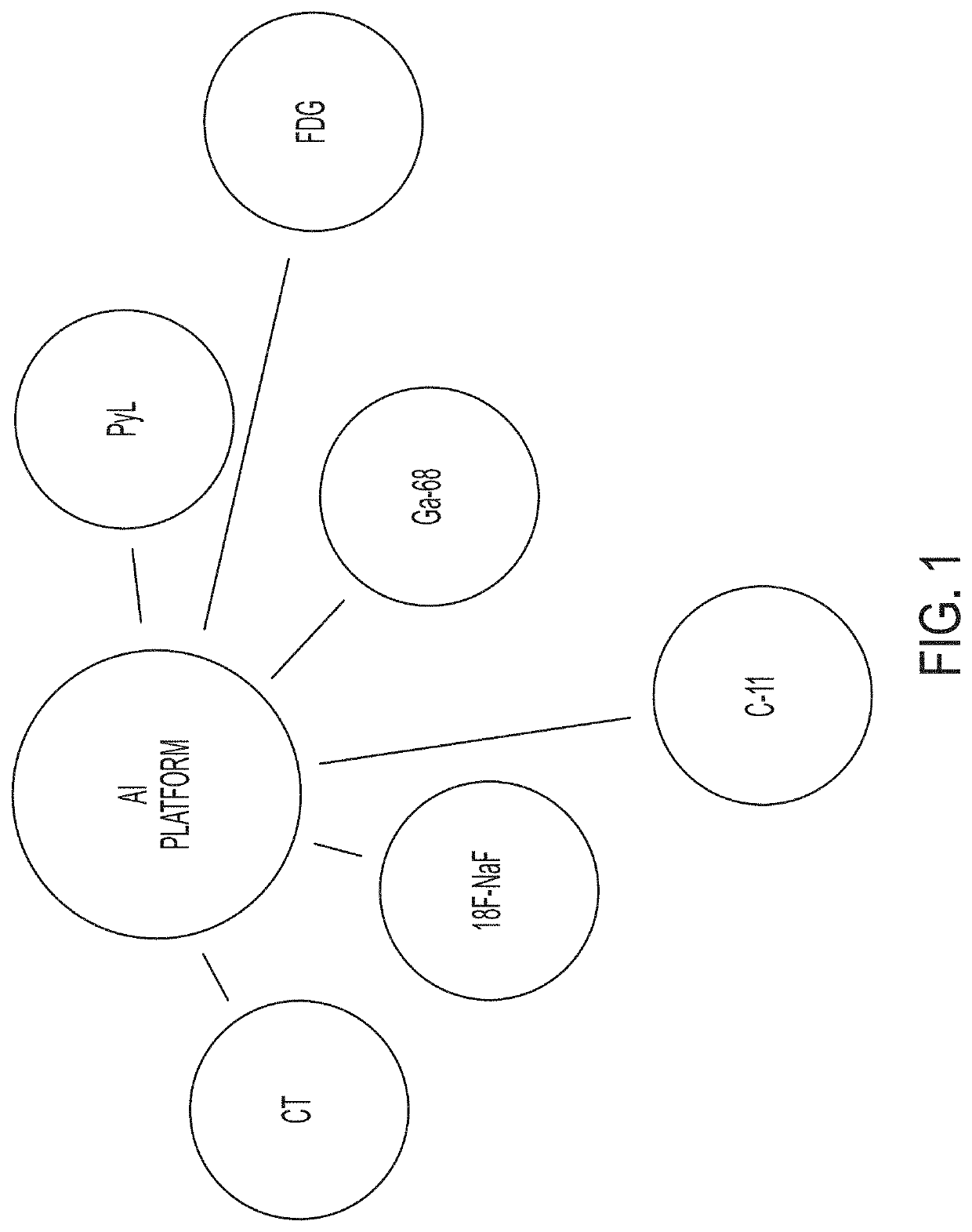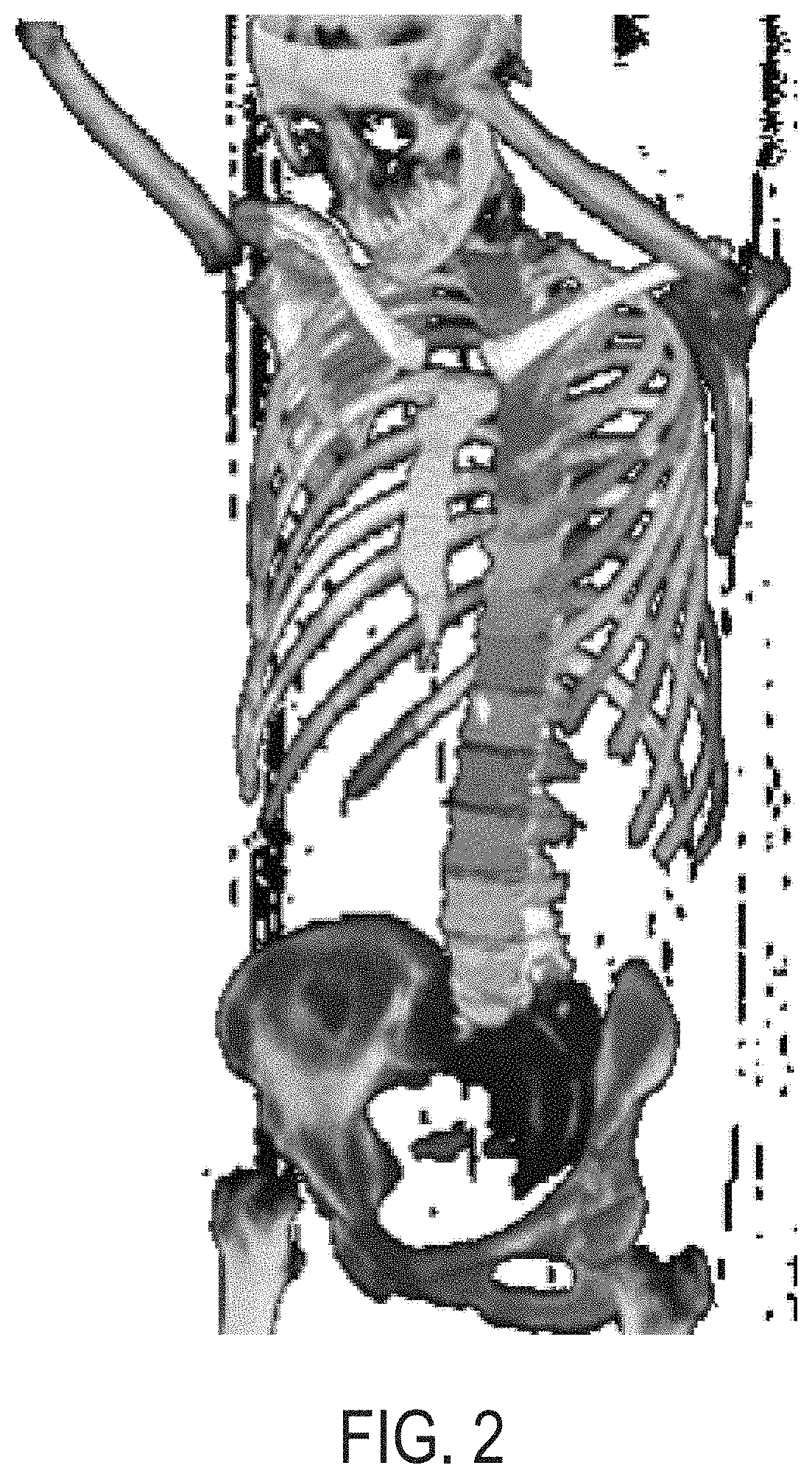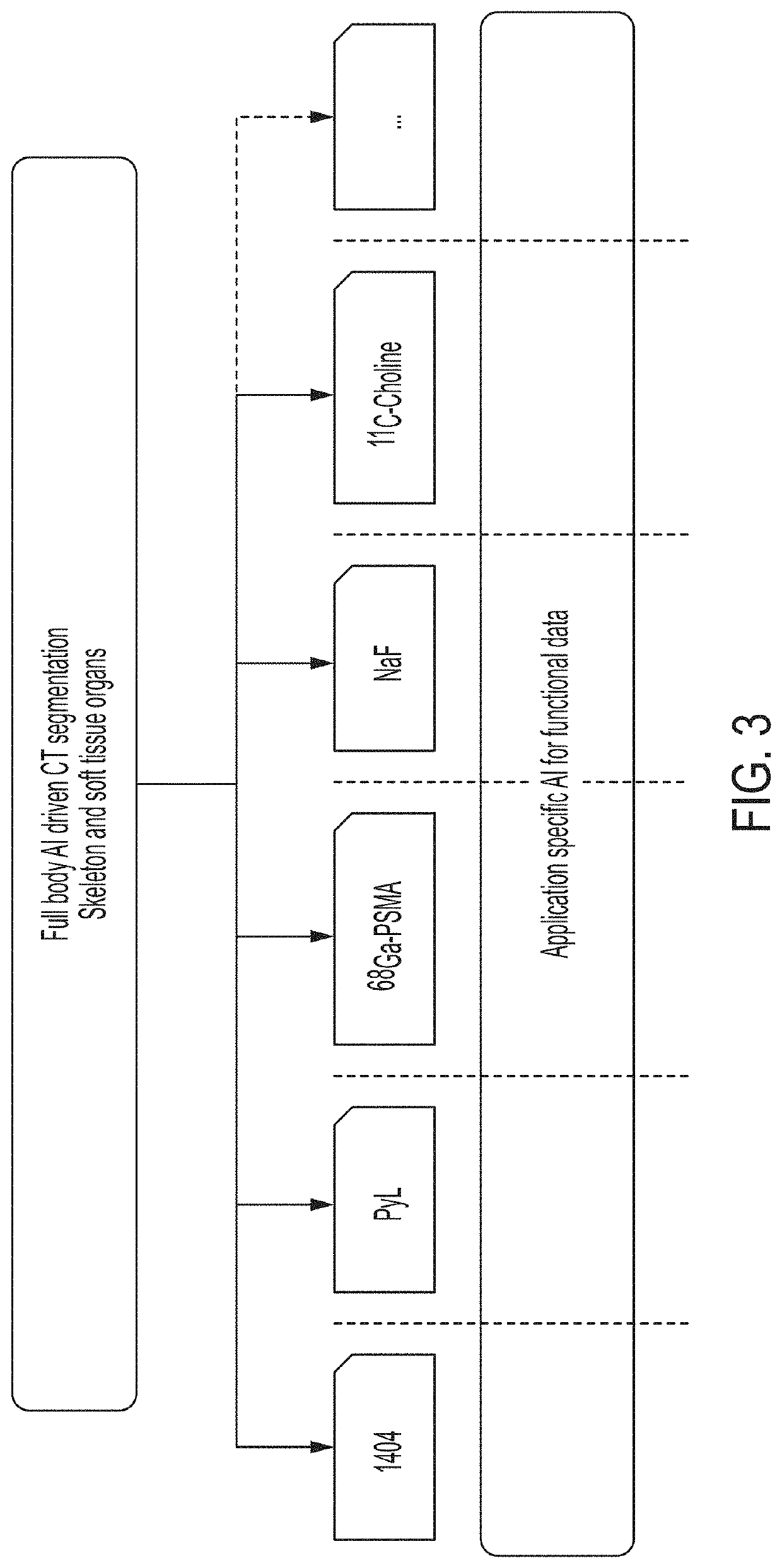Systems and methods for platform agnostic whole body image segmentation
- Summary
- Abstract
- Description
- Claims
- Application Information
AI Technical Summary
Benefits of technology
Problems solved by technology
Method used
Image
Examples
example 3
iii. Automated Whole Body Segmentation for PyL™-PET Image Analysis and Lesion Detection
[0280]This example demonstrates automated segmentation of 49 bones and 27 soft-tissue regions in whole body CT images using deep learning approaches in accordance with the whole body segmentation technology described herein. This example also demonstrates how the anatomical information gained via such segmentation can be used to create a fully automated lesion detection algorithm in [18F]DCFPyL (PyL™-PSMA) PET / CT images. This example also shows how the segmentation can be used to remove background signal from PET images to facilitate observation and detection of lesions in which PyL™ has accumulated.
[0281]FIG. 6A shows a block flow diagram illustrating an embodiment of the segmentation processes described herein that is used in the PyL™-PET / CT image analysis described in this example. As in process 500, shown in FIG. 5, in process 600 an anatomical image is received. In particular, in process 600...
example 6
vi. Automated Hotspot Detection and Uptake Quantification in Bone and Local Lymph
[0303]PyL™-PSMA PET / CT hybrid imaging (e.g., images PET / CT images acquired for a patient after administering PyL™ to the patient) is a promising tool for detection of metastatic prostate cancer. Image segmentation, hotspot detection, and quantification technologies of the present disclosure can be used as a basis for providing automated quantitative assessment of abnormal PyL™-PSMA uptake in bone and local lymph (i.e., lymph nodes localized within and / or in substantial proximity to a pelvic region of a patient). In particular, as shown in this example, image segmentation and hotspot detection techniques in accordance with the systems and methods described herein can be used to automatically analyze in PET images to detect hotspots that a physician might identify as malignant lesions.
[0304]In this example, PET / CT scans were evaluated to automatically identify, within the PET images of the scans, hotspot...
example 8
vii. Improved Performance in AI-Assisted Image Analysis for Patients with Low or Intermediate Risk Prostate Cancer
[0316]99mTc MIP-1404 (1404) is a PSMA targeted imaging agent for the detection and staging of clinically significant prostate cancer. Manual assessment of tracer uptake in SPECT / CT images introduces inherent limitations in inter- and intra-reader standardization. This example describes a study that evaluated the performance of PSMA-AI assisted reads, wherein automated segmentation of prostate volumes and other target tissue regions are performed in accordance with the embodiments described herein, over manual assessment and known clinical predictors.
[0317]The study analyzed 464 evaluable patients with very low-, low-, or intermediate-risk prostate cancer, whose diagnostic biopsy indicated a Gleason grade of ≤3+4 and / or who were candidates for active surveillance (1404-3301). All subjects received an IV injection of 1404 and SPECT / CT imaging was performed 3-6 hours postd...
PUM
| Property | Measurement | Unit |
|---|---|---|
| Fraction | aaaaa | aaaaa |
| Capacitance | aaaaa | aaaaa |
| Size | aaaaa | aaaaa |
Abstract
Description
Claims
Application Information
 Login to View More
Login to View More - R&D
- Intellectual Property
- Life Sciences
- Materials
- Tech Scout
- Unparalleled Data Quality
- Higher Quality Content
- 60% Fewer Hallucinations
Browse by: Latest US Patents, China's latest patents, Technical Efficacy Thesaurus, Application Domain, Technology Topic, Popular Technical Reports.
© 2025 PatSnap. All rights reserved.Legal|Privacy policy|Modern Slavery Act Transparency Statement|Sitemap|About US| Contact US: help@patsnap.com



